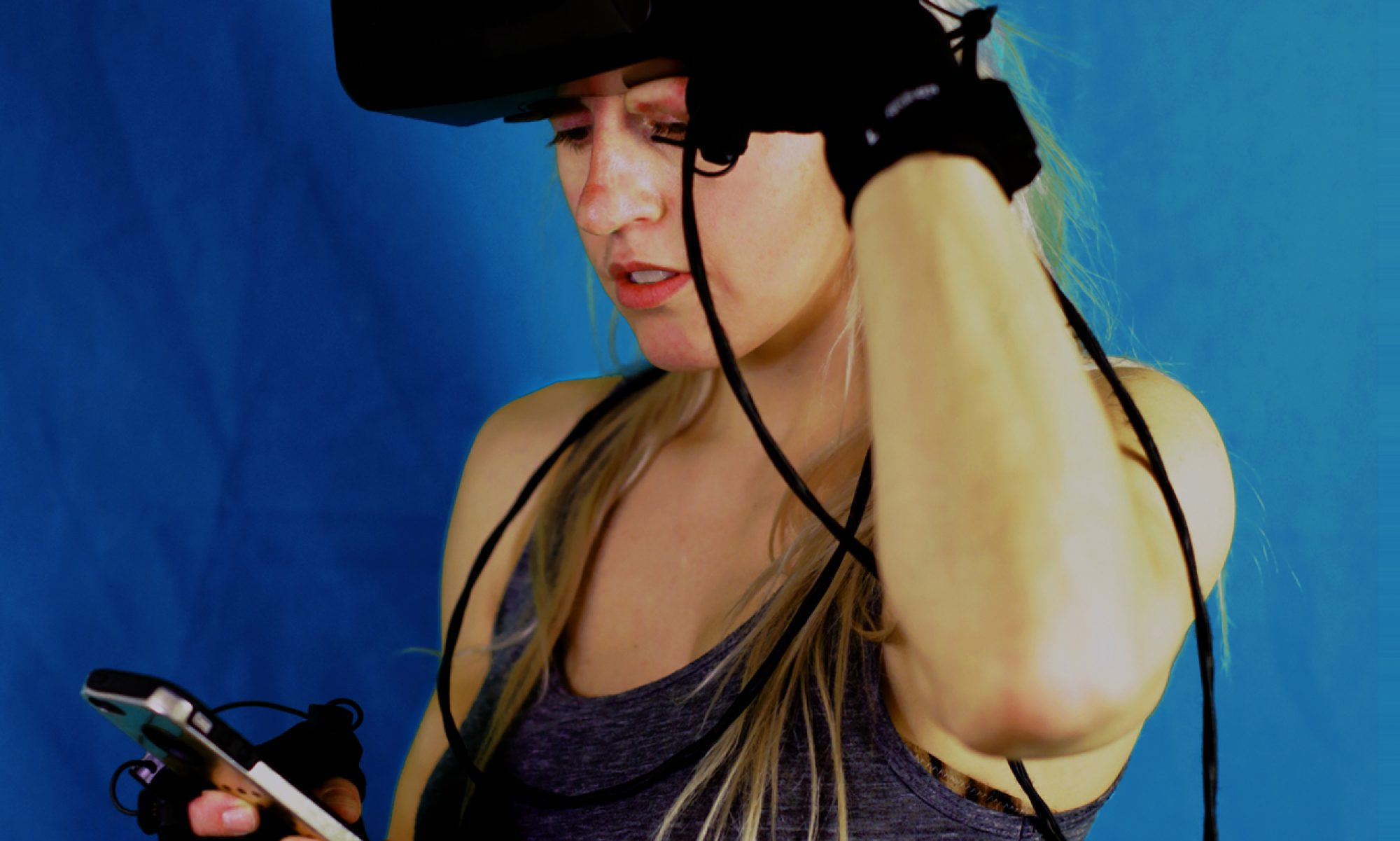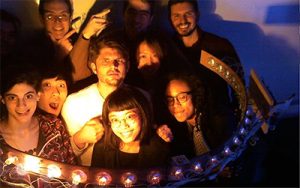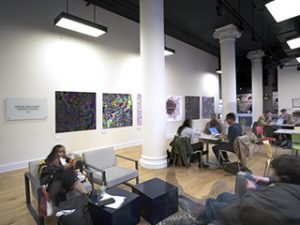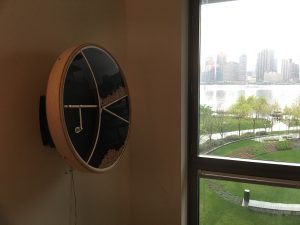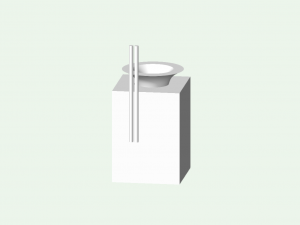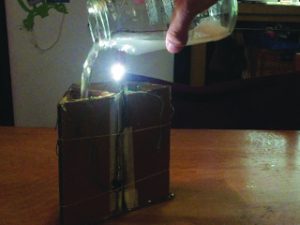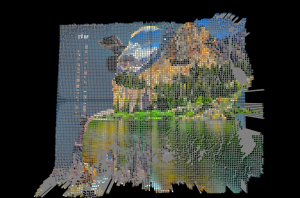Aaron Parsekian
A lighting fixture which is powered by saltwater, bright enough to read by, and built from renewable and recycled materials.
http://www.aaronparsekian.com/?cat=10
Description
This project is the result of my journey over the past semester attempting to develop a lamp that runs on salt water and is constructed out of recycled or renewable materials. My light works by pouring salt water into three chambers which have magnesium and carbon electrodes wired in series, which in turn produces enough current and voltage to power 100 lumens of LED’s. It is bright enough to read under, and will last all night without replenishing the water. With the exception of the three rice-sized LED’s, this lamp is compostable when it reaches its end of life (currently estimated at six months). The carbon electrodes were designed by me, and use pine tree rosin to bind charcoal together to act as the battery anodes. The container of the lamp is made out of cardboard and is waterproofed using pine resin as well. My vision for this lamp is for it to be constructed out of materials that can be understood by a layman, and to not contain any of the harmful chemicals normally found in batteries and electronics. In its current iteration, my light is constructed of cardboard, pine sap, charcoal, magnesium, copper wire, and three high-efficiency LED’s. Currently I have been testing my fixture with saltwater that is the same average salinity as sea water.
Classes
Basic Analog Circuits, Project Development Studio (Danny Rozin), Transformational Design: Mindfulness and Physical Computing for Experience-driven Design
